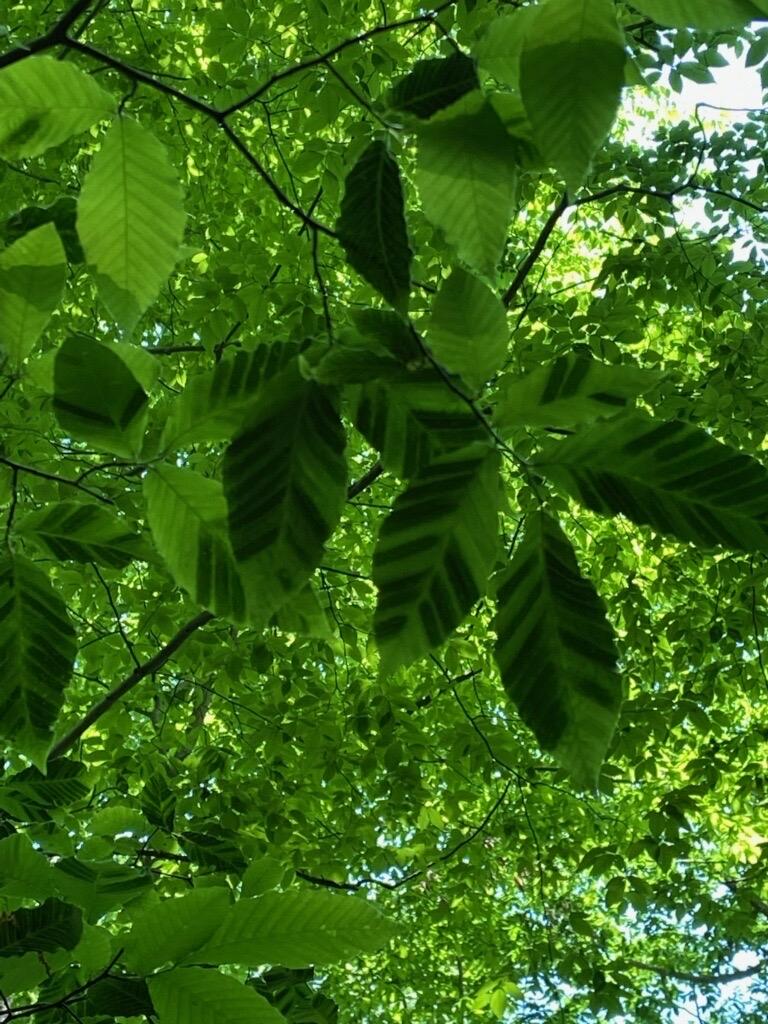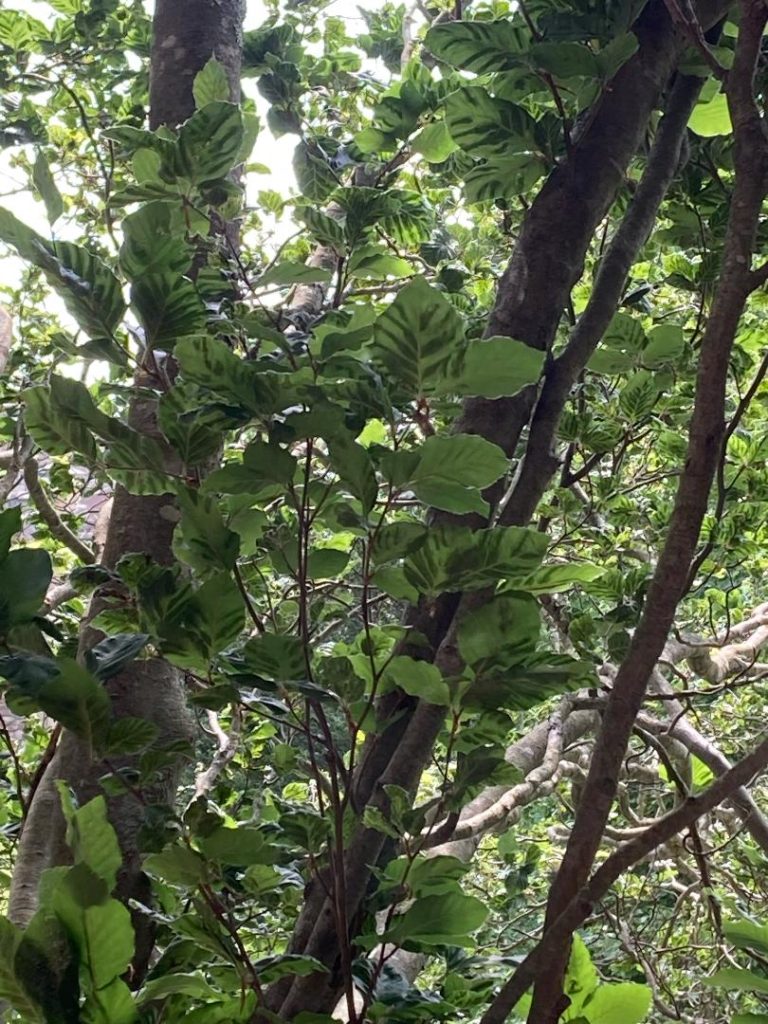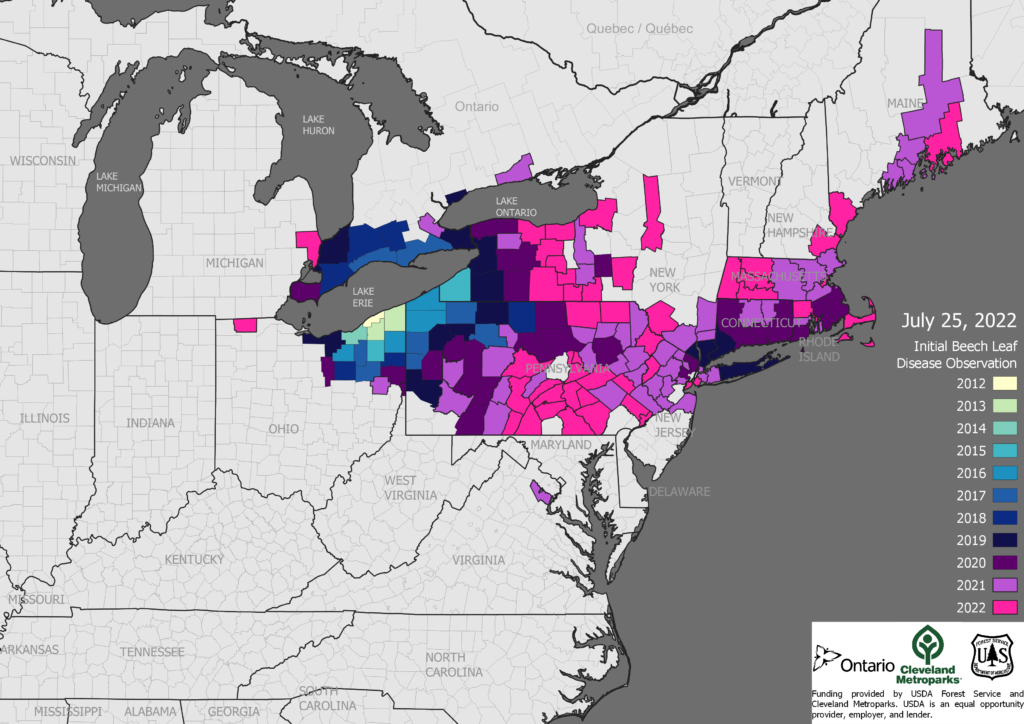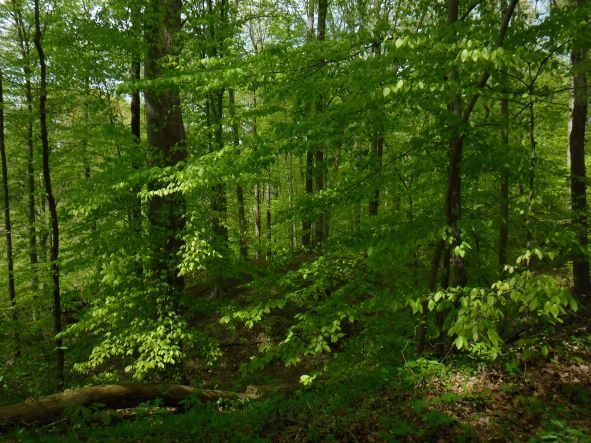
Experts on beech leaf disease (BLD) hold conference calls every two months. I reported on the May meeting earlier in July. The July conference call of the experts emphasized not only the alarming spread of the disease but also the dilemmas frustrating efforts to slow its spread and protect beech.
Jerry Carlson, chief of forest health protection for the New York Department of Environmental Conservation called beech leaf disease “the next chestnut blight”.
Yet forestry, plant health, and conservation entities have been slow to support research needed to develop protective measures.
As was noted by participants, 10 years after scientists from Lake MetroParks (in Cleveland) first detected disease symptoms, scientists still are unsure about all aspects of BLD and how it spreads. Experts agree that the nematode (Litylenchus crenatae ssp mccannii) must be present to initiate the disease. Other possible factors, especially fungi in the genus Colletotrichum, appear to play important roles in causing the symptoms.
The lack of clarity about the causal agent means that USDA APHIS has not recognized the disease as a priority species for tracking. APHIS has provided some funds. However, scientists seeking to obtain funding through the Plant Pest and Disease Management and Disaster Prevention Program [laid out in the Plant Protection Act’s Section 7721] can’t get traction. Other funding sources also don’t quite fit. For example, the National Science Foundation funds basic, hypothesis-driven, research – not the more applied science needed to address BLD. Some participants wondered whether funding might be sought from wildlife-oriented sources, since beech are so important in providing hard mast, den and nest sites, etc., for a variety of wildlife.
Participants discussed ways to raise awareness – and alarm – in order to build a broader coalition. This effort should include Europe. Although the disease has not yet been detected in Europe, the native beech is vulnerable.

Data indicate that the disease is now significantly more widespread than was known last year. That is, BLD is more widespread from New York to Maine, with New Hampshire reporting its first detection. To the west, BLD has been detected in Michigan and in a forest fragment in western Ohio (near Toledo). Disease severity has also intensified. Of course, the disease is present at least a year before it is detected because leaf symptoms appear in the spring following infection. Therefore its presence is probably wider.

While mortality of mature beech is still rarely documented, this might be related to difficulties determining the cause of mortality during standard forest health surveys. Participants discussed how to rectify this situation.
Meanwhile, concern is rising – as reflected in Dr. Carlson’s statement.

You can help by asking your state and national officials and conservation organizations to support applied research aimed at clarifying how the disease spreads, what ecological conditions are conducive to disease, improved detection and prediction tools, and possible containment strategies. Let’s overcome the roadblocks impeding protection of this magnificent and ecologically vital tree species.
Is this not worth protecting?
Posted by Faith Campbell
We welcome comments that supplement or correct factual information, suggest new approaches, or promote thoughtful consideration. We post comments that disagree with us — but not those we judge to be not civil or inflammatory.
For a detailed discussion of the policies and practices that have allowed these pests to enter and spread – and that do not promote effective restoration strategies – review the Fading Forests report at http://treeimprovement.utk.edu/FadingForests.htm
or
